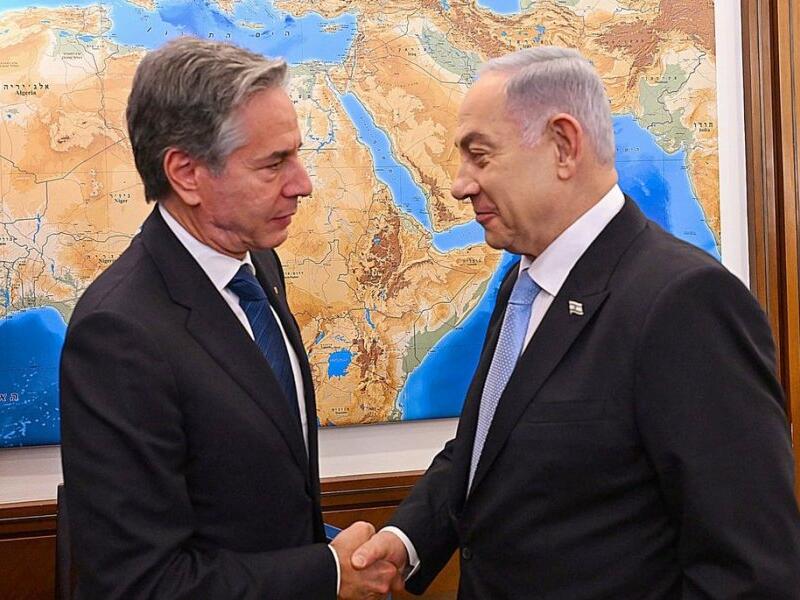Physical Address
304 North Cardinal St.
Dorchester Center, MA 02124
Physical Address
304 North Cardinal St.
Dorchester Center, MA 02124

On August 19, U.S. Secretary of State Antony Blinken expressed that ongoing negotiations between Israel and Hamas, taking place in Qatar, may represent a crucial opportunity for achieving a cease-fire in the Gaza conflict and securing the release of Israeli hostages. This statement came prior to a meeting with Israeli Prime Minister Benjamin Netanyahu.
During a session with Israeli President Isaac Herzog, Blinken highlighted the indirect talks mediated by Egypt, Qatar, and the U.S. as “decisive.” He asserted that these discussions could be the “best, maybe last opportunity” to bring hostages home and establish a sustainable peace in the region.
“We’re working to ensure that there is no escalation, no provocations, and no actions that could derail this process or escalate the conflict further,” Blinken remarked. This visit marks his ninth trip to the area since Hamas launched attacks against Israel on October 7.
The negotiations, which resumed in Doha last week, are centered around a recent proposal put forth by the United States, Qatar, and Egypt aimed at addressing remaining differences between the two parties. This proposal, described as a “bridging proposal,” was said to align with a three-stage plan originally presented by U.S. President Joe Biden in May.
The initial stage of this plan called for a six-week cease-fire, during which Israeli forces would withdraw from populated areas in Gaza, and women, children, and elderly hostages would be released along with the freeing of Palestinian prisoners. The second stage involves the release of all remaining hostages, the completion of Israel’s military withdrawal, and a commitment to a lasting truce. The final stage encompasses the return of deceased hostages, the reconstruction of Gaza, and collaborative efforts between the U.S. and Arab nations aimed at preventing Hamas from rearming.
The White House’s statement on Friday emphasized that the proposal builds on the areas of agreement identified over the previous week while addressing the remaining gaps to allow for swift implementation of the deal.
Key issues that continue to create obstacles include whether Israeli forces will fully withdraw from Gaza, a condition Hamas has stipulated as essential for any agreement. Other contentious points involve the return of displaced Gazans to northern Gaza and Israel’s demand that the area remains free of armed individuals during a cease-fire.
Furthermore, Israel insists on establishing an international mechanism to monitor and prevent the movement of arms from southern Gaza to the north, as well as retaining a say over which Palestinian prisoners are released.
Reports indicate that the bridging proposal does not accommodate Netanyahu’s requirement for Israeli Defense Forces to remain stationed in the Philadelphi Corridor, which lies along Gaza’s southern border with Egypt. However, multiple sources noted that Israeli security officials believe that withdrawing from the zone during the first phase of the proposed deal would not significantly hinder Hamas’s ability to rearm. This situation could be managed through unspecified border procedures.
Washington remains optimistic about securing the deal, potentially as soon as the start of the coming week. Blinken is expected to advocate strongly for an agreement during his face-to-face discussions with Netanyahu later on Monday.
Despite these efforts, both Israel and Hamas have presented a lack of optimism regarding the likelihood of a breakthrough in negotiations. Recently, they engaged in mutual accusations, with Hamas blaming Netanyahu for creating new barriers to an agreement and alleging that he seeks to prolong the conflict for political gain. In response, Netanyahu criticized Hamas, stating that they had not even sent a representative to the talks in Doha, insisting that pressure should be focused on Hamas and its leader, Yahya Sinwar, rather than the Israeli government.
Source: UPI



